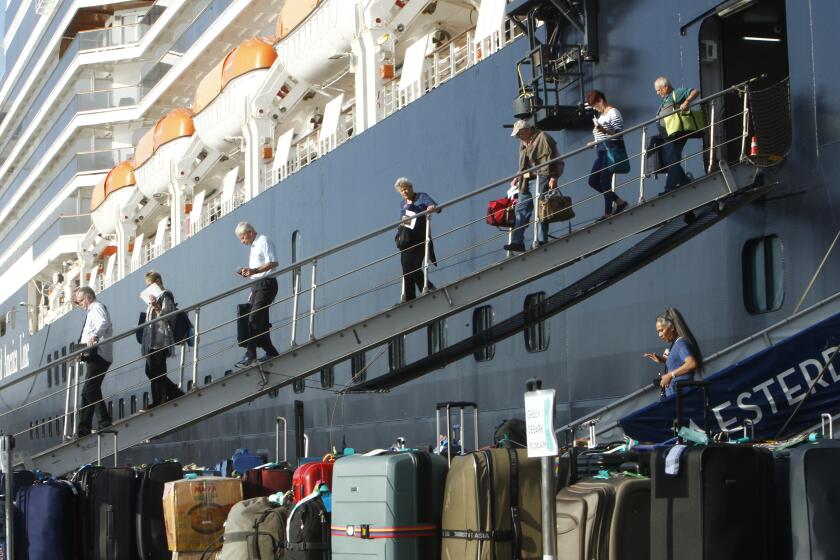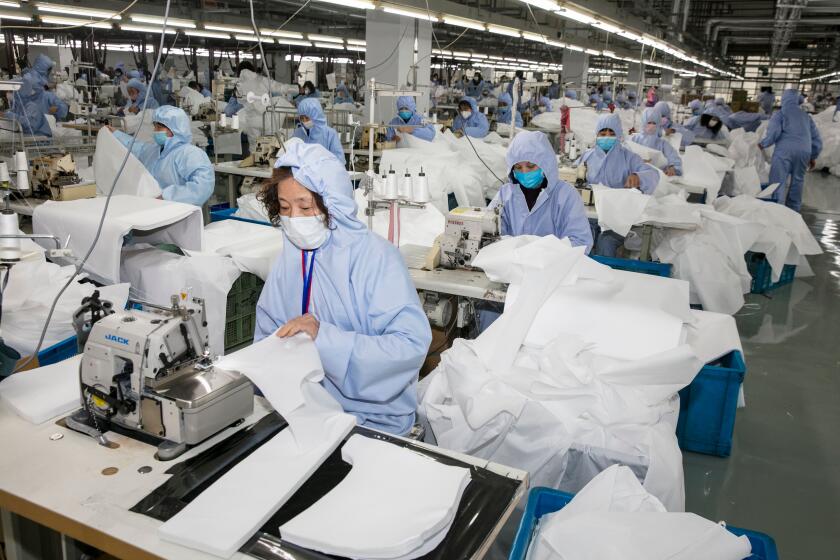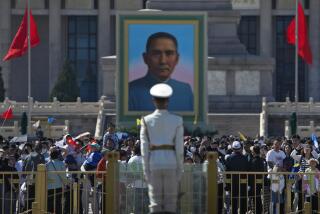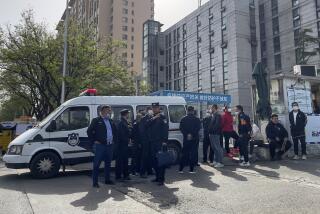Virus claims life of hospital director in hard-hit Wuhan, China

As a mysterious new virus enveloped central China’s Wuhan early this year, Liu Zhiming mobilized all the resources of his hospital in the city’s Wuchang district to deal with the thousands of sick people arriving daily, threatening to overwhelm the local healthcare system.
That dedication appears to have cost him his life, with Wuhan’s health bureau announcing Tuesday that he became infected and died despite “all-out” attempts to save him.
Liu is at least the seventh health worker to die of the COVID-19 disease among the more than 1,700 doctors and nurses who have become sick. His death comes as authorities are cautiously cheering a reduction in the number of new daily cases and deaths, along with the results of a study showing most people who contracted the virus experienced only mild symptoms.
China on Tuesday reported 1,886 new virus cases and 98 more deaths.
That raised the number of deaths in mainland China to 1,868 and the total confirmed cases to 72,436.
The outbreak has caused massive disruptions, and China may postpone its biggest political meeting of the year to avoid having people travel to Beijing while the virus is still spreading. One of the automotive industry’s biggest events, China’s biannual auto show, also is being postponed, and many sports and entertainment events have been delayed or canceled.
Governments were scrambling to trace passengers after an 83-year-old American woman who traveled on the Westerdam cruise liner was infected.
Despite strict rules on use of masks and safety suits, medical workers have been among the victims, particularly in the early stage of the outbreak.
In announcing Liu’s death, the Wuhan Municipal Health Commission said he had taken part in the battle against the virus from the start and had made “important contributions in the work of fighting and controlling” the virus.
During that process “unfortunately he became infected and passed away at 10:54 Tuesday morning at the age of 51 after all-out efforts to save him failed,” it said.
The Hubei native had graduated from Wuhan University’s School of Medicine in 1991 and went on to a career as a chief physician, neurosurgeon and administrator.
Earlier this month, public outrage was stirred by the death from the virus of Wuhan doctor Li Wenliang, who had been threatened by police after releasing word of an outbreak of unusual respiratory illness in January before the city was placed under quarantine.
The spread of the coronavirus caused organizers of next month’s 2020 Tokyo Marathon to downsize their massive race to a small field of elite runners.
Wuhan and its surrounding cities in Hubei province have accounted for the vast majority of infections and deaths, prompting the government to enforce a travel ban that has spread to other parts of the country and now includes a mandatory 14-day self-quarantine period for anyone traveling outside their home district. Two new prefabricated hospitals have been built to deal with the overflow in Wuhan and thousands of medical staff have been brought in from other parts of the country to help.
A study by the Chinese Center for Disease Control and Prevention found that more than 80% of people infected had mild illness and the number of new infections seems to be falling since early this month. World Health Organization Director-General Tedros Adhanom Ghebreyesus said it was too early to know if the reported decline would continue. “Every scenario is still on the table,” he said at a news conference.
The seeming drop in the number of new cases follows a large spike last week after Hubei province began counting cases by doctors’ diagnoses without waiting for laboratory test results. Health authorities there said the change was meant to get patients treated faster.
The Chinese study examined 44,672 cases of the disease that were confirmed in China as of Feb. 11. Severe symptoms such as pneumonia occurred in 14% of them and critical illness in 5%. The fatality rate was 2.3% — 2.8% for males versus 1.7% for females.
The deadly coronavirus outbreak is hurting scores of companies in California and nationwide that depend on Chinese production and consumer spending.
The death rate is lower than for SARS and MERS, diseases caused by coronaviruses related to the one that causes COVID-19. But the new virus ultimately could prove more deadly if it spreads to far more people than the others did. Ordinary flu has a fatality rate of 0.1% yet kills hundreds of thousands because it infects millions each year.
The COVID-19 cases include relatively few children, and the risk of death rises with age. It’s higher among those with other health problems — more than 10% for those with heart disease, for example, and higher among those in Hubei province versus elsewhere in China.
The study warned that while cases seem to have been declining since Feb. 1, that could change as people return to work and school after the Lunar New Year holidays. Beijing sought to forestall that by extending the holiday break, restricting travel and demanding 14-day self-quarantines for anyone returning from outside their immediate region.
Travel to and from the worst-hit central China region was associated with the initial cases of COVID-19 confirmed abroad. But Japan, Singapore and South Korea have identified new cases without clear ties to China or previously known patients, raising concern of the virus spreading locally.
The largest number of cases outside China is among passengers and crew of the Diamond Princess cruise ship quarantined at a port near Tokyo. The Japanese Health Ministry has tested 1,723 people among the 3,700 initially on board, and 454 have tested positive.
The U.S. evacuated 338 American passengers, with most of them placed in a 14-day quarantine at military bases in California and Texas. Fourteen tested positive for the virus.
More to Read
Sign up for Essential California
The most important California stories and recommendations in your inbox every morning.
You may occasionally receive promotional content from the Los Angeles Times.











